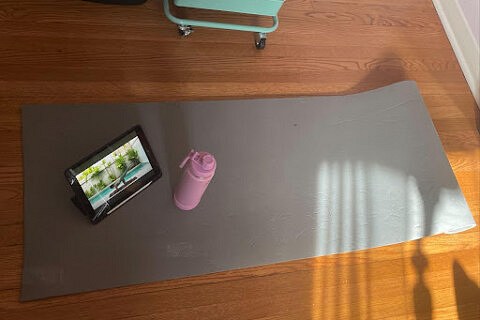Graphic by: Gwyneth Gravador
Starting Out
While it may be tempting to go out and buy all the plants for your home, start slow. It’s important to make sure you have the proper space to ensure healthy plant growth. Most plants at the store have some information included but it’s always a good idea to do some research about your plant since these instructions aren’t always accurate.
Some beginner plant recommendations include Pothos and Basil. Pothos is highly resilient, low maintenance and needs little to moderate indirect sunlight. Basil is also resilient and low maintenance, it grows quickly and can be used in the kitchen for tasty meals.
Unlimited Plant Hack
Did you know that some plants can be self-duplicated? This is called propagation. Both Pothos and Basil can be propagated.
Let’s try this at home and use Pothos as an example.
- Carefully trim a vine off of your original plant, making sure to do so above the node (little bump separating each segment)
- Tip: Try pinching between your thumb and index finger’s nail
- Place cut vines of Pothos in a vessel with fresh water
- Make sure to place them in an area with a lot of sunlight as these cuttings will require lots of energy to grow
- Frequently change your vessel’s water out
- After a few days, you should begin to notice roots forming
- Once the roots have reached a length of at least an inch or so, you can carefully remove the plant and transfer it to a fresh pot of soil
- Repeat the process for unlimited plants!
As a tip, if you’re in the kitchen a lot, you can keep a source of fresh green onion at all times by keeping the roots in a vessel of water. Just make sure to switch the water out every few days or so.
Set Watering Schedule
To maximize your plant’s rate of survival, making sure you have all the right information on how to take care of them is key. Set alarms or write down reminders in your phone’s calendar to help keep track of your plant’s watering schedule.
As a tip, try poking your finger into the soil as a way to tell if your plant needs more or less frequent watering.
Keep An Eye Out
Nothing beats consistent attention in nurturing your plant as much as possible. Paying attention to details in its leaves as an example, can tell you a lot about the health of your plant. Sometimes a plant simply won’t be happy with their initial placement but they’ll be sure to let you know as long as you remain observant.
One tip is to try moving your plant around until they find a “happy spot.” This will be when they are fully green, strong and thriving.
Overall, getting into plant parenting and acquiring your green thumb is all about learning through trial and error. Even the most experienced gardener can always learn new tips. So whether you are becoming a plant parent or trying to expand your green knowledge, I hope you found some insight in this article.
Happy gardening!






Recent Comments